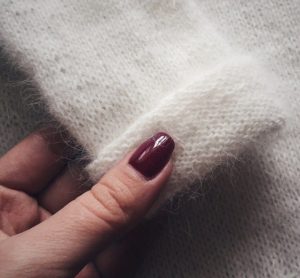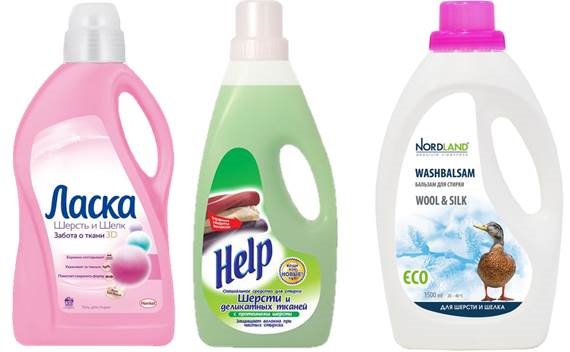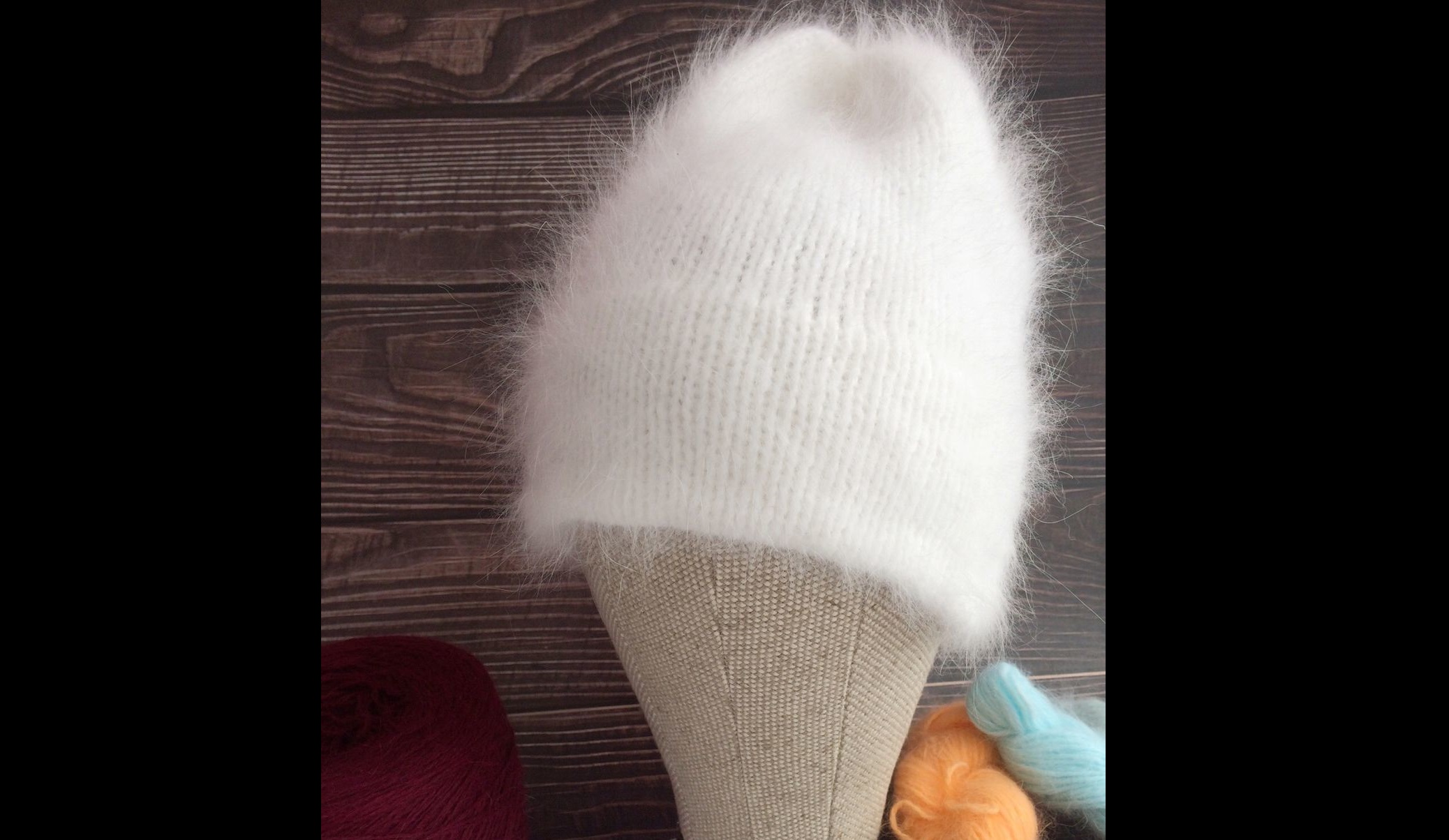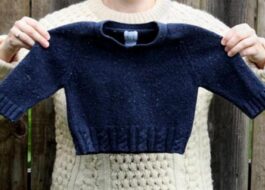Washing angora clothes at home
 Angora yarn is considered the most capricious of all delicate materials. It is easily deformed, wears out quickly and, most importantly, does not like water very much. In order not to spoil the wool, to maintain its original appearance and softness, you need to know how to wash angora clothes at home. You can’t just throw a woolen product into the washing machine and pour in the first powder that comes to hand - there are many nuances and dangers. It’s better not to rush and clean everything without the slightest risk.
Angora yarn is considered the most capricious of all delicate materials. It is easily deformed, wears out quickly and, most importantly, does not like water very much. In order not to spoil the wool, to maintain its original appearance and softness, you need to know how to wash angora clothes at home. You can’t just throw a woolen product into the washing machine and pour in the first powder that comes to hand - there are many nuances and dangers. It’s better not to rush and clean everything without the slightest risk.
Let's choose the right powder
If something made from Angora wool gets dirty, the first thing you should think about is a suitable detergent. This material is very sensitive and fragile, so not all compositions will clean dirt without harm. It is better to choose safe options:
- special gels for washing wool and other delicate fabrics;
- regular hair shampoo (it is advisable to choose children's shampoo or one with the addition of egg);
- baby soap (or any toilet soap, if it does not contain dyes);
- laundry soap (in combination with glycerin).
Liquid products are used as usual: the required amount of gel is measured and diluted in water. Bar soap, both baby and laundry, must be prepared before immersion in the basin. First, the piece is grated on a fine grater, then mixed into a foamy solution, and at the “finish” 5 ml of glycerin is added to everything. If the composition already contains a softener, then the last step is skipped.
Angora can be washed with delicate gels, shampoo, baby or laundry soap.
It is prohibited to use the following products when washing angora:
- washing powder (granules do not dissolve well in cold water, become clogged with fibers and cannot be rinsed out, which ultimately affects the appearance of the product);
- bleaches (gels with a bleaching effect are also undesirable, since even gentle compositions irreversibly destroy the fibers).

If your angora hat, pullover or scarf has lost its original softness, it won’t hurt to add a little rinse aid or conditioner to the soap solution. Glycerin has a similar effect. This additive will also prevent the pile from matting and extend the “shelf life” of the item.
Automatic cleaning
Before you start washing Angora wool in the washing machine or by hand, you should carefully study the manufacturer's label. When caring for an angora, you should adhere to the rule that the less rabbit fur the item contains, the easier the product is to wash. So, if the composition reports the presence of 10-50% fluff, then the clothes can be wetted without the risk of damage. When the percentage of yarn is higher, the clothing is called “premium” and is only dry cleaned no more than 1-2 times a year.
But even with 10-50% angora in the material, you should be extremely careful. If you have the time and energy to wash by hand, then it is better to abandon the washing machine and proceed as follows:
- turn the item inside out (ideally, it is recommended to temporarily sew up the loops, collars and sleeves so that the item does not stretch during washing);
- pour water heated to 30-35 degrees into a container of suitable volume (maximum temperature - 40 degrees, otherwise the product will shrink, and the pile will mat and lose its original softness);
- prepare a soap solution by stirring the poured detergent;
- lower the item into the water and soak for 15 minutes (if you need to bleach the fabric, you can leave it for 2-3 hours);
- gently wrinkle the wool with your hands, squeezing it in different places and periodically turning the fabric over (strong twisting will cause the pile to come out of the material);
- thoroughly rinse the product in clean water (it is important that the water temperature during rinsing does not differ from the washing water);
- add conditioner or glycerin during the last rinse;
- transfer the item to an empty basin, periodically pouring out the released liquid;
- leave until most of the water has drained from the product.
Twisting and squeezing products containing angora down is prohibited!
If you want to wash your angora in a washing machine, then you need to remember several important rules. Firstly, the item turned inside out must be placed in a special protective bag. Secondly, pour a suitable gel and conditioner into the tray, discarding powder and bleaches. Thirdly, select the “Wool” or “Delicate Wash” program. Don’t forget to check the settings: spinning and drying should be turned off, and the temperature should be set to 30-40 degrees. At the end of the cycle, the clothes are removed from the drum and placed in an empty container for further drying.
Removing moisture correctly
We remind you once again that you cannot squeeze or twist things with the addition of angora down. Automatic drying is also contraindicated - the product must be dried in a special way. This is done like this:
- wrap the item in a roll in a terry towel or absorbent diaper, and then gently press it with your hands;
- spread an oilcloth on a flat horizontal surface, and place a terry towel folded in several layers on top;

- lay the angora on a towel and straighten it with your palms;
- when the litter is saturated with moisture, change it and turn the product over.
If you are drying a hat or beret, then the still wet product must be pulled over a suitable round object - a ball, jar or cup.
Once drying is complete, you need to fluff the product. The simplest option is to shake the item several times and comb it with a soft brush, first along the pile, and then against it. The previous fluffiness is also restored after “freezing”: simply place the rolled angora in polyethylene, release the air and put it in the freezer. Another way is to hang clothes on hangers over the steam or use a steamer. You cannot iron a thing made from angora! You can wash angora without any consequences. You just need to remember a few rules.
Interesting:
Reader comments
- Share your opinion - leave a comment





















Add a comment